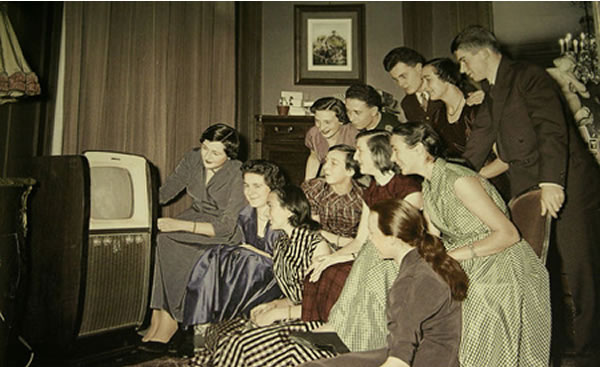One of the things I enjoyed most about my earliest work as a creative director years ago (first as an associate, then a senior), was my immediate exposure and hands on experience in multiple forms of media. While my education and experience was a strong combination of graphic and written communication, video was one medium in which I had done little, and the rapid growth of the “world wide web” as we had once called it, was still several years off.
That said, video caught my interest immediately. After all, who could resist the glamour of the stage lights, the big expensive cameras, and the edit suites that reminded you of the bridge of the Enterprise with the lights dimmed down? That aside, what I truly loved most about the medium was its capacity not just to convey a message, but the emotion in ways that words alone often cannot do.
Back in the day, most small businesses could not afford to use video due to the high cost of production. Of course, we all know that has changed. Indeed, the latest smart phones will capture high definition video with quality that rivals much pricier gear (which itself costs far less than the $30k Sony Betacam cameras my crews shot with…back in the day).
That said, while the cost of production tools has come way down, and the means of production have been streamlined (much in the way desktop publishing disrupted traditional typesetting a quarter century ago), the possession of professional tools does not necessarily make one a professional.
And the evidence of this fact abounds…in all media.
Of course, I hope you see the intended irony of the headline—which I should probably walk back slightly. Indeed, video has caught on. Because there is so much BAD video out there, I thought I might pass on a few observations as to why, if you make these mistakes, your video will likely never catch on with your prospects.
Consider these questions:
Does my video scream “amateur?” Don’t get me wrong here…when producing quick, value-based videos that are largely distributed online, there is some leeway when it comes to “professional” standards. If a video is too polished, it can lose authenticity. Your audience will feel as though it is being marketed to, rather than being served. But we still must maintain some standards here. Lighting, shooting on a tripod, frame composition, clean editing…all these factors come into play. And the fact is, do it yourselfers are falling way short. I’ve seen the evidence not just online, but even on television.
Why isn’t my subject wearing a mic? This is perhaps the single most common mistake I see made, especially in cases where the video is primarily a speaker telling a story or explaining a concept. Whether your subject is speaking directly into the camera (and to the audience) or toward an off-camera interviewer (documentary style), that speaker should ALWAYS be wearing a microphone. When you can pick up a broadcast quality lavalier mic at Radio Shack for $30, there is absolutely no excuse.
Have I transcribed the content? When posting video online, you must ALWAYS be posting a transcript of the content in the video description box. This is not just for SEO purposes. It’s for the audience as well. Sometimes, your audience will prefer to read rather than watch and listen to your content (especially if they are in an environment that requires discretion). Let them absorb it in their own way. The great news about YouTube is that it has a transcribing feature that allows you to manually transcribe your finished video in real time (it plays and then pauses during keystrokes)! I love it. It’s intended for closed captioning, but what you do is copy the typed text and then paste it in the description field of the video. Yes, YouTube can “auto” generate captions, but it’s not very accurate.
Is my video too long? I’ve heard different opinions on how long is too long…and to be honest I’m not sure there is a set answer for everyone. For most, however, anything over a minute or two is likely going to get less play, unless there is a real solid interest up front. Further, even if the video is short, it helps to visually keep it moving. If you are doing a talking head, add in a couple image overlays (with motion)–which can make for great video in the absence of additional footage.
Am I trying to do too much with too little? I will be blunt here: If you want an animation, or even animated characters, but don’t have the budget to do it right, then don’t do it. The result will only look amateurish and become a distraction from your core message. You can be realistic and genuine to your limitations and still communicate effectively (which is what we want to do anyway!). I might get some wrath for saying this here, but sometimes “creativity” is overrated. Authenticity is more important.


Be the first to comment on "Why Video Will Never Catch On"